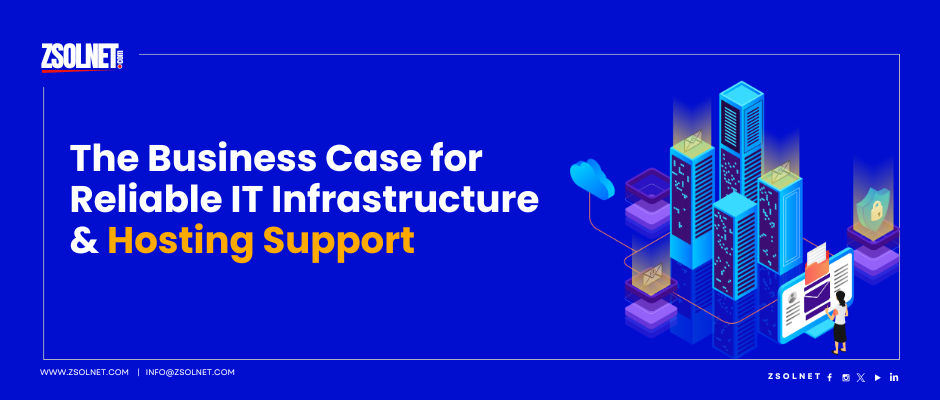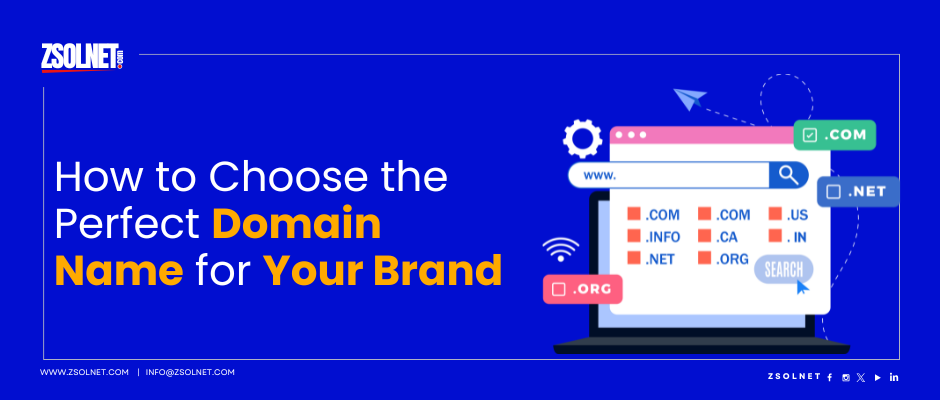Executive Summary
This article explores how reliable IT infrastructure and professional hosting support serve as strategic business assets rather than mere technical necessities. We examine the measurable benefits of proactive IT infrastructure management, including reduced downtime, enhanced security, improved scalability, and significant cost savings over time. Through real-world case studies and practical implementation guidance, we demonstrate how businesses can transform their approach to IT infrastructure from a reactive cost center to a proactive competitive advantage that delivers tangible ROI.
In today’s digital-first business landscape, your IT infrastructure isn’t just a technical necessity—it’s a critical business asset that directly impacts your bottom line. From seamless customer experiences to protecting sensitive data, the strength of your technological foundation can mean the difference between thriving and merely surviving in an increasingly competitive marketplace.
Yet many small and medium-sized businesses still view IT infrastructure and hosting support as cost centers rather than strategic investments. This perspective often leads to reactive approaches that can result in costly downtime, security vulnerabilities, and missed opportunities for growth and innovation.
In this comprehensive guide, we’ll explore why reliable IT infrastructure deserves a place in your business strategy and how strategic investments in quality hosting support can deliver substantial returns for your organization.
The Importance of Reliable IT Infrastructure
Read: Why ZSOLNET’s Web Hosting Is Built for Speed, Security & Scale
The Foundation of Business Continuity
Reliable IT infrastructure serves as the backbone of modern business operations. When systems fail, business grinds to a halt—and the costs add up quickly.
According to a study by Gartner, the average cost of IT downtime is $5,600 per minute, which can translate to over $300,000 per hour for mid-sized businesses. For smaller operations, even brief periods of downtime can lead to lost sales, damaged customer relationships, and diminished team productivity.
Consider what happens when your systems go down:
- Revenue Impact: Customer transactions can’t be processed, leading to immediate financial losses
- Communication Breakdown: Email, chat, and phone systems become unavailable, cutting off customer contact
- Productivity Loss: Employees can’t access critical tools and information needed to perform their jobs
- Process Failure: Automated processes and workflows cease functioning, creating operational bottlenecks
- Data Vulnerability: Information may become compromised or lost during unexpected shutdowns
Each minute of downtime doesn’t just impact your immediate revenue—it can damage your reputation and customer trust, which are much harder to quantify but potentially more devastating in the long run.
Scalability for Business Growth
As your business evolves, your IT needs will inevitably change. A reliable infrastructure isn’t just about maintaining the status quo—it’s about creating a foundation that can flex and grow alongside your business.
Scalable infrastructure allows you to:
- Accommodate increasing website traffic during peak periods
- Support additional users and applications as your team expands
- Manage growing data storage requirements
- Deploy new services and capabilities quickly
- Enter new markets without rebuilding your technical foundation
Without this scalability, your IT systems can become bottlenecks that constrain business growth rather than enabling it. Many businesses discover this challenge only when they’re already facing performance issues, by which point the solution is often more disruptive and expensive than if scalability had been built in from the start.
Security and Compliance Considerations
In an era of increasing cyber threats and stringent data protection regulations, security isn’t optional—it’s imperative. Reliable IT infrastructure includes robust security measures designed to protect your business assets and customer data.
A security breach can cost small businesses an average of $200,000, with many being forced to close within six months of the attack. Beyond the financial impact, security incidents can trigger regulatory penalties, legal liabilities, and lasting reputational damage.
Compliance requirements add another layer of complexity. Depending on your industry and location, you may need to adhere to standards like GDPR, HIPAA, PCI DSS, or SOC 2. Meeting these requirements isn’t just about avoiding penalties—it’s about demonstrating your commitment to responsible data handling practices.
Benefits of Professional Hosting Support
Proactive Monitoring and Maintenance
One of the most significant advantages of professional hosting support is the shift from reactive to proactive management of your IT environment. Rather than waiting for problems to occur and then scrambling to fix them, expert hosting providers continuously monitor your systems to identify and address potential issues before they impact your business.
This proactive approach typically includes:
- 24/7 Monitoring: Continuous oversight of system performance and security metrics
- Automated Maintenance: Regular security updates and patch management on schedule
- Hardware Management: Ongoing health checks and preventative maintenance protocols
- Resource Planning: Capacity forecasting to prevent resource constraints before they occur
- Performance Tuning: Regular optimization for peak system efficiency and speed
The result is greater system reliability, fewer unexpected disruptions, and a more predictable IT environment overall.
Read Also: 5 Website Maintenance Tasks You Should Be Doing Monthly
Technical Expertise On Demand
Technology continues to evolve at a rapid pace, making it challenging for internal teams to maintain expertise across all relevant domains. Professional hosting support gives you access to specialists with deep knowledge in specific areas of IT infrastructure.
| Expertise Area | Benefits to Your Business |
|---|---|
| Server Technologies | Optimal configuration, virtualization strategies, efficient resource allocation |
| Network Architecture | Reduced latency, improved throughput, enhanced reliability |
| Database Management | Query optimization, data integrity, faster information access |
| Security Protocols | Threat prevention, vulnerability management, compliance assurance |
| Cloud Technologies | Hybrid deployment options, seamless scaling, cost optimization |
By leveraging this expertise, you can make more informed decisions about your IT investments and implementation strategies, avoiding costly mistakes and ensuring optimal configuration of your systems.
Focus on Core Business Functions
Perhaps the most overlooked benefit of reliable hosting support is the freedom it gives your team to focus on strategic initiatives rather than routine infrastructure management.
When you’re not consumed with server maintenance, troubleshooting connectivity issues, or responding to the latest security vulnerability, you can direct those resources toward activities that drive business growth and competitive advantage.
For businesses with limited IT resources, this benefit is particularly valuable. Your technical staff can concentrate on projects that leverage technology for business innovation rather than simply keeping the lights on.
Cost Implications and ROI of IT Infrastructure Investments
Beyond Initial Price Tags: The Total Cost of Ownership
When evaluating IT infrastructure investments, many businesses focus exclusively on initial purchase costs. However, this approach fails to account for the total cost of ownership (TCO), which includes ongoing operational expenses, maintenance requirements, and the cost of eventual upgrades or replacements.
A more comprehensive analysis considers factors such as:
- Energy consumption and cooling requirements
- Administrative overhead and management time
- Training and specialized skill requirements
- Compatibility with existing systems
- Lifecycle expectations and replacement cycles
- Support and maintenance contracts
Reliable infrastructure may require greater upfront investment but often delivers lower TCO through reduced maintenance needs, longer useful life, and fewer disruptive failures.
The Cost of Inadequate Infrastructure
The financial impact of infrastructure failures extends far beyond the direct costs of repairs or replacements. Business disruptions create cascading effects that can impact multiple areas of your organization:
- Lost productivity when employees can’t access systems
- Missed revenue opportunities during outages
- Overtime costs for emergency repairs
- Potential contractual penalties for service disruptions
- Customer compensation or goodwill gestures
- Recovery costs for corrupted or lost data
These “hidden” costs often dwarf the visible expenses associated with IT failures. By investing in reliable infrastructure and support, you’re essentially purchasing insurance against these costly disruptions.
Calculating ROI for Infrastructure Investments
Measuring the return on infrastructure investments requires considering both the tangible and intangible benefits they provide. While some metrics are easily quantifiable, others represent value that’s harder to measure but no less significant.
Quantifiable factors might include:
- Reduced downtime frequency and duration
- Lower support ticket volume and resolution time
- Decreased security incident response costs
- Improved employee productivity
- Infrastructure management time savings
Less tangible but equally important benefits include:
- Enhanced customer experience and satisfaction
- Improved business agility and faster time to market
- Reduced business risk and improved compliance posture
- Better employee experience and retention
- Increased capacity for innovation
When these factors are considered holistically, investments in reliable IT infrastructure often demonstrate compelling ROI that extends well beyond simple cost savings.
Case Studies: Real-World Impact of Reliable IT Infrastructure
Retail Success Story: From Downtime to Uptime
A mid-sized e-commerce retailer with approximately 500 daily transactions was experiencing frequent website outages during peak shopping periods, resulting in an estimated $20,000 in lost sales each month. Customer complaints were increasing, and their reputation was suffering with negative reviews mentioning website reliability issues.
After investing in upgraded hosting infrastructure with dedicated support, the company experienced:
- 99.99% uptime, even during seasonal peaks
- 40% faster page load times
- 15% increase in conversion rates
- 28% reduction in cart abandonment
- Dramatic decrease in customer service complaints
The initial investment in improved infrastructure was recouped within five months through increased sales alone, not counting the significant operational efficiencies gained.
Manufacturing Firm Transforms Operations
A manufacturing company with 75 employees relied on legacy systems hosted on aging on-premises hardware. System slowdowns were common, and backup processes were inconsistent, creating significant business risk.
After transitioning to a hybrid cloud infrastructure with managed hosting support, they experienced:
- 30% reduction in IT maintenance costs
- 99.9% success rate for data backups
- 60% faster ERP system performance
- Zero unplanned downtime in the first year
- 18% improvement in production efficiency through new IoT capabilities
The company’s IT director noted: “What we thought was just a technical upgrade became a business transformation. We’ve gone from spending 80% of our IT time on maintenance to investing 70% in innovation projects that drive revenue.”
Professional Services Firm Enhances Client Confidence
A legal services firm handling sensitive client data was concerned about security vulnerabilities in their existing infrastructure. They also struggled with remote access capabilities for their increasingly mobile workforce.
After implementing a secure, cloud-based infrastructure with comprehensive support, they achieved:
- Full compliance with industry security standards
- Seamless remote work capabilities for all staff
- 45% reduction in IT-related support tickets
- Enhanced disaster recovery capabilities with 2-hour recovery time objective
- Increased client confidence, helping secure two major accounts specifically citing data security as a decision factor
The managing partner commented: “Our IT infrastructure has gone from being a constant worry to a competitive advantage we actively promote to clients.”
Making the Case for Investment: Practical Steps Forward
Assessing Your Current Infrastructure
Before making decisions about infrastructure improvements, conduct a thorough assessment of your current environment:
- Performance evaluation: Identify bottlenecks and limitations in your existing systems
- Risk assessment: Document vulnerabilities and potential points of failure
- Compliance audit: Ensure your infrastructure meets relevant regulatory requirements
- User experience review: Gather feedback from employees and customers about system performance
- Cost analysis: Calculate the true cost of maintaining your current infrastructure
This assessment provides the baseline against which potential improvements can be measured and helps prioritize investments for maximum impact.
Building a Strategic Roadmap
Rather than approaching infrastructure as a series of one-off purchases or upgrades, develop a strategic roadmap that aligns with your business objectives:
- Define business priorities: Identify the capabilities most critical to your operation
- Establish performance targets: Set specific, measurable goals for improvement
- Evaluate options: Consider different approaches, including on-premises, cloud, and hybrid solutions
- Plan for phased implementation: Break large initiatives into manageable projects
- Build in flexibility: Ensure your plan can adapt to changing business needs and technologies
This strategic approach transforms infrastructure decisions from reactive responses to proactive investments in business capabilities.
Quick Assessment: Is Your Infrastructure Supporting or Hindering Your Business?
<div style=”background-color: #f5f5f5; padding: 20px; border-radius: 5px; margin: 20px 0;”> <p><strong>Take our quick assessment to identify potential infrastructure weaknesses:</strong></p> <ul> <li>Has your business experienced unplanned downtime in the past 3 months?</li> <li>Do employees complain about system performance or reliability?</li> <li>Are you unsure if your data backup procedures are working properly?</li> <li>Has your IT spending been primarily reactive rather than planned?</li> <li>Are you concerned about your ability to recover from a major IT disruption?</li> </ul> <p>If you answered “yes” to two or more questions, your infrastructure may be creating business risk that needs to be addressed.</p> <p><strong>Contact our team for a comprehensive infrastructure assessment →</strong></p> </div>
Selecting the Right Partners
The quality of your hosting and support provider can significantly impact the value you receive from your infrastructure investments. When evaluating potential partners, consider:
- Technical expertise: Do they have experience with your specific technologies?
- Service levels: Do their guaranteed response times and availability align with your needs?
- Security credentials: What measures do they take to protect your data and systems?
- Scalability options: Can they accommodate your growth without major transitions?
- Business understanding: Do they take time to understand your business objectives, not just your technical requirements?
The right partner becomes an extension of your team, bringing specialized expertise and capabilities that would be impractical to develop internally.
Conclusion: Infrastructure as a Business Enabler
Reliable IT infrastructure and quality hosting support are not merely technical necessities—they are strategic business enablers that can drive competitive advantage in today’s digital economy.
By shifting perspective from viewing infrastructure as a cost center to recognizing it as a foundation for business capabilities, organizations can make more informed investment decisions that deliver tangible returns through enhanced reliability, improved security, and greater operational efficiency.
The most successful businesses recognize that technology infrastructure is too critical to be an afterthought. By giving it the strategic attention it deserves and partnering with experts who can optimize its implementation and management, you position your organization to thrive in an increasingly digital business landscape.
Key Takeaways
- Strategic Mindset: Approach IT infrastructure as a business investment, not just a technical expense
- Proactive Management: Partner with hosting experts who can prevent issues before they impact operations
- Measurable Results: Track and analyze the ROI of your infrastructure investments across multiple business dimensions
- Competitive Edge: Use reliable infrastructure as a foundation for innovation and enhanced customer experiences
- Risk Reduction: Protect your business against costly downtime and security vulnerabilities
The question is no longer whether your business can afford to invest in reliable IT infrastructure, but whether it can afford not to. In a world where digital capabilities increasingly determine market success, robust infrastructure isn’t optional—it’s essential.
Ready to transform your approach to IT infrastructure? Contact ZSOLNET today for a comprehensive assessment of your current environment and a customized roadmap for improvement.
This article was prepared by ZSOLNET, specializing in enterprise-grade IT infrastructure and hosting solutions for small and medium-sized businesses. Our team of certified experts is dedicated to helping organizations leverage technology for business success.





